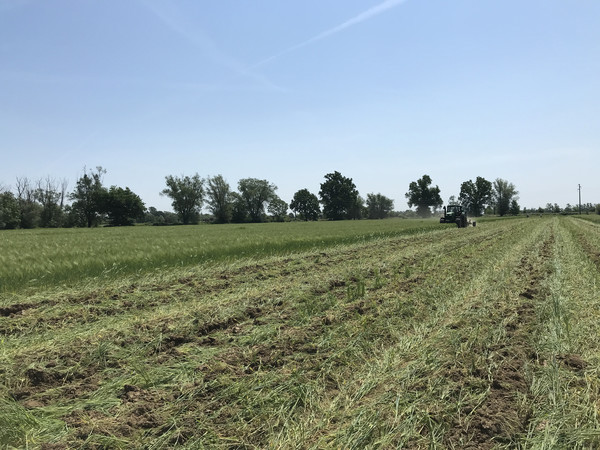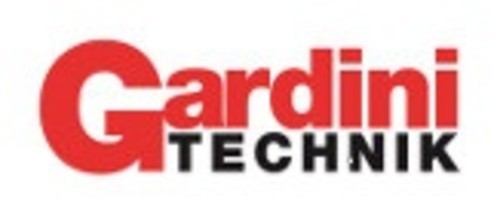
The mechanical treatment of intercrops
When properly managed, intercrops provide agronomic and environmental benefits to the soil. The varietal choice of the crop and the termination technique are of major importance. The growing interest in this practice has led to the development of dedicated equipment
Cover crops usually occupy the land between the end of the cycle of one main crop and the beginning of the next, providing vegetative soil cover at times when it would remain bare or, at most, with residues from the previous crop. The cover protects the soil from water and wind erosion and, after incorporation of the plant material into the ground, improves its structure while increasing its organic matter content, but also retaining nitrogen from livestock manure, thus reducing its leaching and making it available for the next crop. In addition, cover crops contribute to weed control through natural competition for light, water, and nutrients and/or through the production of allelopathic principles, that is, substances that can depress weed germination and development. However, in order to proceed with the planting of the next cash crop, cover crops must undergo an appropriate termination process, i.e., abatement and incorporation into the soil. This can take place before or at the same time as seeding in a single operation with combined yards. The optimal time for termination depends on the characteristics of the main crop and the conditions necessary for its optimal growth, but also the type of cover crop adopted, its development, and the termination technique adopted.
Termination techniques. For species defined as "frosty," including strigose oats, white mustard, "Tillage Radish" horseradish, and Bengal vetch, the action of winter frost can be exploited. In this case, devitalization occurs following exposure to temperatures below 0°C for an appropriate period in terms of duration and intensity. Conversely, chemical termination involves the use of non-selective herbicides, typically Glyphosate, whose distribution in the field is done by spray boom or, sometimes, to increase its effectiveness, in combination with other termination machines.
Mechanical termination can involve burying the biomass, either completely or partially, or keeping the vegetation on the surface to create a mulch layer. In the former case, termination is done by classic plowing due to the inversion of layers performed by the plow. This increases nitrogen release and has positive effects on soil moisture content.
However, plowing nullifies the hedging effect; moreover, whole, live plants can hinder the complete turning of the slice, clogging the working organs. Alternatively, with a view to conservation agriculture in which horizon shuffling is favored, disc or anchor harrows are used in the case of abundant or low biomass, respectively. More specifically, harrows scale, cut and partially bury the cover crop, working at higher forward speeds than plowing. In addition, due to the larger contact area between residues and soil, humification of the cover crop is faster, with more effective nutrient release. Moreover, to avoid the use of synthetic herbicides (either for environmental reasons or because they are inadmissible, as is the case, for example, under organic farming), termination techniques performed with specific tillers are becoming widespread. In this case, the cover crop is managed by mowing, chopping and harrowing with undercutter harrows, which sever the roots of the plants a few centimeters deep thanks to horizontal, broad-winged blades, neatly laying the epigeal biomass (that part of the plant that protrudes from the ground), on the ground, thus promoting soil cover.
Possible disadvantages of this solution include the risk of re-sprouting, particularly if termination is carried out before flowering, and the rapid decomposition of the biomass, which, if shredded too finely, results in reduced weed suppression during the next cash crop cycle. A more recent additional mode of termination involves the use of alligator rollers (or "crimper rollers"), which break down the cover crop, leaving a neat "mat" of plant material on the surface.
Basically, under the weight of a cylindrical roller equipped with blades, forced bedding of the plants is performed on the outer circumference, and they are devitalized by vigorous compression of the stems, which destroys their vascular system. From a constructional point of view, alliterator rollers are simple and relatively inexpensive, can work on relatively large fronts, and require low power for operation. Limitations of use include not only adequate cover crop size, optimal soil moisture, risk of re-sprouting, and vegetative recovery during the next crop cycle but also possible difficulty in seeding the cash crop due to excessive biomass on the surface.
Multi-tool operator. As part of the X-Cover project, co-funded by the European Agricultural Fund for Rural Development (Feasr) under the 2014-2020 Rural Development Program of the Lombardy Region, a multi-tool operator capable of combining different tools to increase the effectiveness of mechanical termination was designed and developed at the Department of Agricultural and Environmental Sciences of the University of Milan.
The operating machine of the semi-mounted type is based on a tool-carrying frame equipped with two three-point hitch with automatic terminals so that two different implements can be used at the same time, with working depth adjustment by single-acting preloaded hydraulic cylinders. At the rear, the machine is equipped with a pair of pivoting support wheels, adjustable in height by means of a double-acting hydraulic cylinder, for transferring the machine and adjusting the height while working. Different types of implements can be implemented with this machine, starting with a cultivator with two rows of goose-foot anchors with wide staggered blades. The cultivator ensures effective tillage across the entire working face while providing the best runoff of soil and crop residues. An additional pair of blades attached to each anchor allows for a working width of about 40 cm to increase the cutting and crop eradication effect, similar to what is achieved with the undercutter harrow. The multi-tool machine can also be equipped with a disc harrow, which consists of two disc-holder shafts that, by means of a hydraulic cylinder, can form an angle between them ranging from 0° (parallel discs) to 15°. The disks have wavy edges (turbo colter blade type) to shred and bury crop residues more effectively. Finally, the machine developed by the University of Milan can be equipped with a rigid-frame crimper roller with 15° inclined blades and a smooth profile to minimize vibrations due to rolling. It is possible to increase the mass of the roller by filling it with water through a special side inlet.
Field trials carried out in 2021-22 with the first two combinations achieved termination efficacy similar to that of chemical treatment, thus significantly reducing the environmental impact of the intervention and leaving the soil in a condition that allows seedbed preparation for the cash crop with or without a residual mulching effect.
In conclusion, the effectiveness of mechanical termination depends on several factors, the most important of which are the stage of development of the cover crop, the operational working parameters (forward speed, working depth, pressure and regulation of the working organs), the amount of epigeal biomass, the characteristics of the root system and the weather conditions after the intervention. For example, crushing is ineffective for cover crops at an early stage of development (typically before the rootstock for grasses), which turns out to be a common situation when, in the climatic conditions of northern Italy, the cash crop is to be sown between the end of March and the first half of April.








